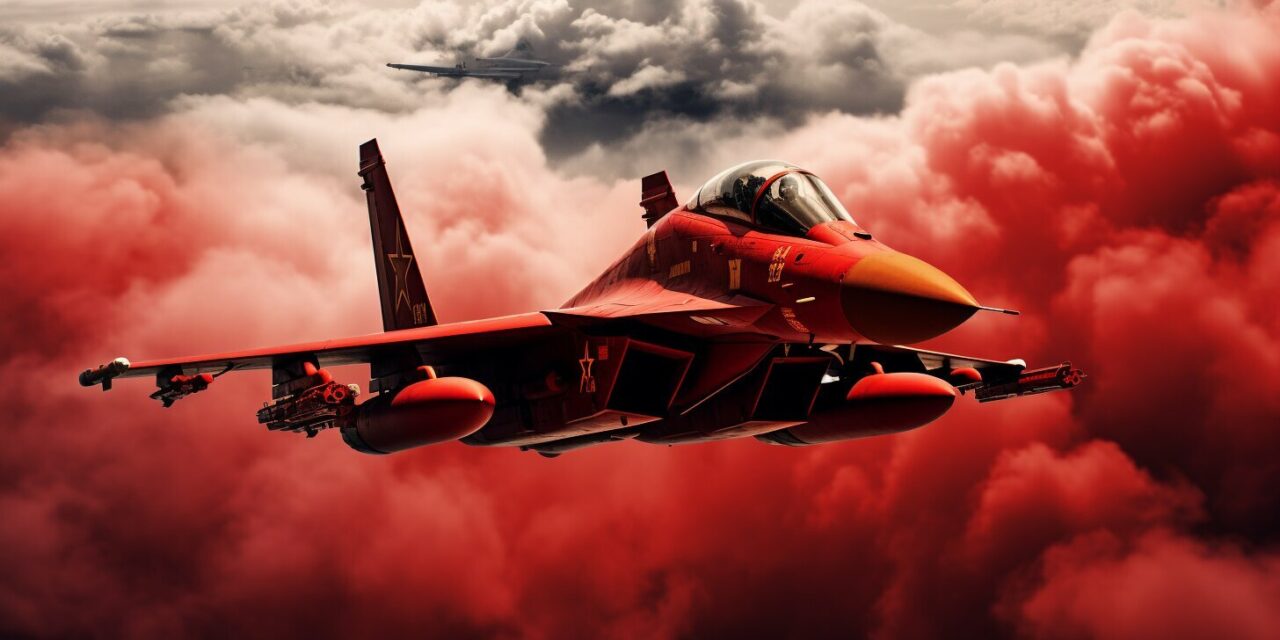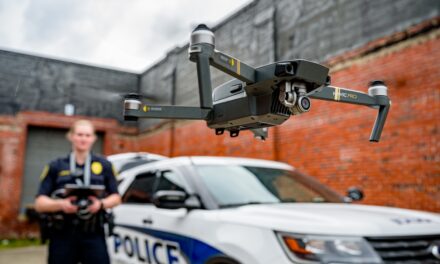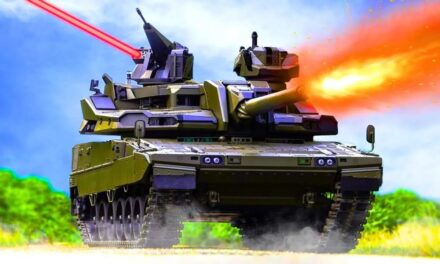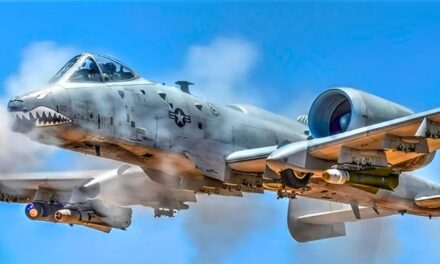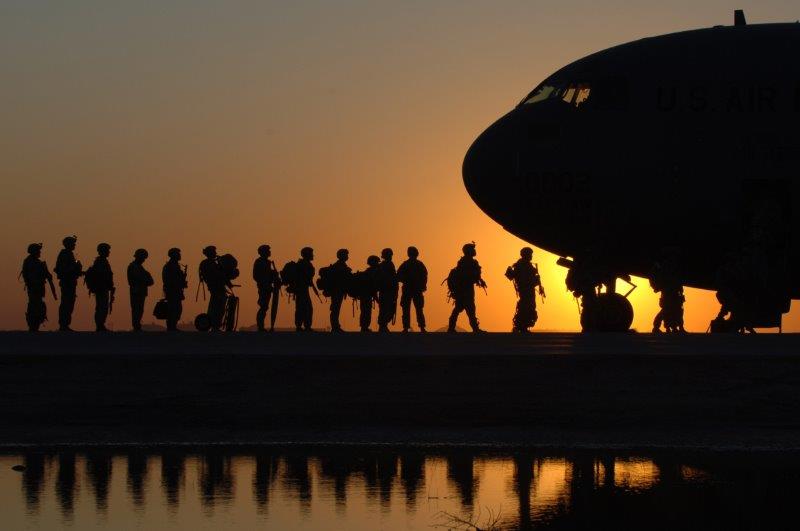China's development of modern and highly capable fighter jets like the J-11 and J-20 has raised concerns about the potential threat they pose to regional security and global stability. Recent unsafe intercepts and close encounters between Chinese fighter jet pilots and aircraft from the US and its allies highlight the risks of miscalculation as strategic rivalry intensifies. However, clear communication, adherence to international protocols, and prudent crisis management can mitigate tensions even as China's air power grows.
Key Takeaways
- China's air force is rapidly expanding with advanced new fighters like the J-20 and J-11.
- Aggressive maneuvers by Chinese pilots have increased tensions with the US and allies.
- Near collisions underscore the danger of disregarding international air safety norms.
- While deterring aggression, the US and allies should also pursue diplomacy with Beijing.
- Upholding freedom of navigation must be balanced with avoiding unintended escalation.
China's Expanding and Modernizing Air Force
Over the last two decades, China has invested heavily in modernizing its air force, known as the People's Liberation Army Air Force (PLAAF). New advanced fighter jets like the J-20 and J-11 have provided PLAAF pilots with capabilities rivalling the US and its regional allies.
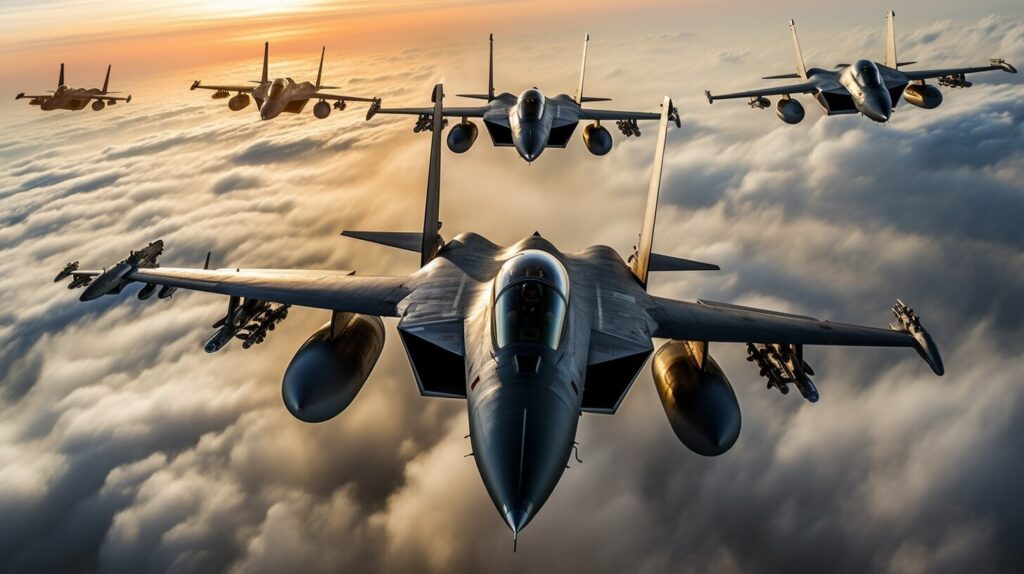
The J-20, in particular, represents a major leap forward for Chinese fighter technology. Nicknamed the "Mighty Dragon", it is China's first stealth fighter, with a reduced radar signature that makes it harder to detect. It likely matches or exceeds the capabilities of top American stealth jets like the F-22 and F-35. With sophisticated avionics and long-range missiles, the J-20 poses a significant threat as a strike and interceptor platform.
So far, China has built over 100 J-20s, with production ramping up rapidly. Current estimates suggest the J-20 fleet could swell to over 1,000 aircraft by 2030. Such a force would dwarf American stealth strength in the Pacific and provide China control over the skies from the South China Sea to the Taiwan Strait.
In addition to the J-20, new variants of workhorse fighters like the J-11 have also boosted PLAAF strength. The J-11 serves as China's frontline air superiority jet, with precision strike abilities. Its advanced sensors, networking, and weapons make it more than a match for earlier US fighters like the F-15 and F/A-18. Even heavily armed close air support aircraft like the venerable A-10 Thunderbolt would likely suffer heavy losses going against an agile fighter like the J-11 in contested airspace.
Aggressive PLAAF training further enhances the lethality of Chinese fighter pilots. Exercises regularly include dissimilar air combat, night operations, maritime strike, and joint drills with other PLA branches. Realistic training conditions PLAAF pilots to prevail in actual combat.
With its expanding fighter fleet and intensive training, it's clear China intends to achieve air dominance over the Asia-Pacific region. This ambition is bound to come into conflict with America's aim of upholding stability and the status quo.
Key Capabilities of Chinese Fighters like the J-20, FC-31 and J-11
- Stealth - Radar-evading shaping and coatings make jets like J-20 much harder to detect.
- Sensors - Advanced AESA radars and infrared search/track systems for omnidirectional awareness.
- Avionics - State-of-the-art mission computers and helmet-mounted displays.
- Missiles - Long-range air-to-air missiles able to threaten aircraft and AWACS from afar.
- Networking - Secure data links to share sensor data between manned and unmanned systems.
PLA Training Increasingly Aggressive and Realistic
- Mock air battles against "Blue Force" adversaries.
- Complex large-scale exercises involving many aircraft.
- Maritime strike drills overwater against ship targets.
- Joint operations coordinated with army, navy, rocket forces.
- Day and night missions under varying weather conditions.
- Focus on pilots being flexible, proactive, and able to operate independently.
Recent Unsafe Interactions with US and Allied Aircraft
Even as China's air power grows, its fighter pilots have acted aggressively in several recent encounters with American and allied aircraft. By disregarding international protocols and engaging in provocative maneuvers, these incidents have increased risks of an accidental conflict.
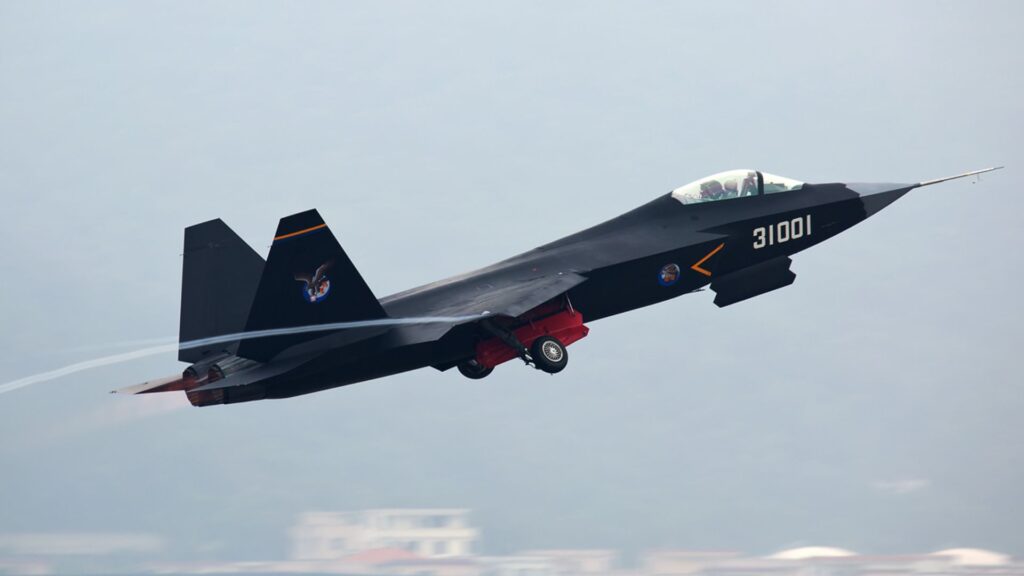
In several instances, Chinese fighter jets have released chaff, employed water cannons, and used military-grade lasers to intimidate other nations' aircraft and vessels. These actions display a disregard for safety protocols and increase the likelihood of accidents. The repeated occurrences of such incidents are a cause for concern and require concerted efforts to address and prevent further escalations.
Intercepts by Chinese Pilots Seen as Provocative and Risky
On October 26, 2022, a PLAAF J-11 fighter conducted an unsafe intercept of a US Air Force B-52 bomber over the South China Sea at night. The military said the Chinese fighter jet came within 10 feet from the B-52 and nearly caused a catastrophic midair collision, according to the Pentagon.
US officials were concerned this pilot was unaware of how close he came to disaster. His actions were labelled as unprofessional, risky, and contrary to the norms of air safety.
This was not an isolated incident either. Since fall 2021, the US military has recorded over 180 such incidents of Chinese aerial harassment directed at American aircraft. Chinese fighters routinely get too close and flout accepted protocols during intercepts.
Other regional nations like Canada, Australia, and Japan have also reported dangerous encounters with aggressive PLAAF pilots. Such provocative behavior increases the chances of an accidental clash through miscalculation.
Near Misses with US Bombers over South China Sea
In May 2022, a Chinese J-16 flew dangerously close in front of a US reconnaissance plane over the South China Sea, forcing the American aircraft into the Chinese jet's turbulence.
In December 2021, a PLAAF J-16 fighter did a barrel roll over a US Air Force RC-135 spy plane above the same waters. The risky maneuver could have came to causing a collision.
During these incidents, Chinese pilots ignored radio warnings, turned off aircraft lighting, and buzzed the US planes at uncontrolled excessive speed. Such reckless flying shows a disregard for air safety.
These close calls with American bombers and surveillance aircraft appear deliberately intended to send a message that China claims sovereignty over the South China Sea. But dangerous intercepts only raise tensions and mistrust on both sides.
"The unsafe and unprofessional intercept by the Chinese fighter jet over the South China Sea demonstrates the need for increased communication and adherence to international norms to prevent dangerous incidents." - U.S. Department of Defense
Table: Comparison of Chinese and U.S. Aircraft
| Chinese Fighter Jet | U.S. Bomber | |
|---|---|---|
| Speed | Mach 2 | Mach 0.86 |
| Range | 1,200 miles | 8,800 miles |
| Weapon Payload | 8,800 lbs | 70,000 lbs |
| Stealth Capability | No | Yes |
| Number of Crew | 1 | 5+ |
The table above provides a brief comparison between a Chinese fighter jet and a U.S. bomber. While the Chinese fighter jet may have the advantage of higher speed, the U.S. bomber boasts a significantly greater range and weapon payload. Additionally, the U.S. bomber possesses advanced stealth capabilities, allowing it to evade detection more effectively. These differences in aircraft capabilities play a crucial role in shaping the dynamics and potential outcomes of encounters between Chinese and U.S. military aircraft.
Chinese Fighter Jets and Increasing Tensions with Taiwan
China's military activities, particularly the deployment of fighter jets, have raised significant concerns regarding regional stability and security, specifically in relation to Taiwan. This has further heightened tensions between China and Taiwan, as well as with other nations in the Asia-Pacific region. China considers Taiwan as part of its territory and has repeatedly demonstrated its willingness to use force to reunify the island with the mainland. The presence of Chinese fighter jets near the Taiwan Strait and instances of incursions into Taiwan's airspace pose a direct threat to Taiwan's sovereignty.

China's fighter jets carry out frequent patrols and exercises near Taiwan's borders, further exacerbating the already delicate situation. These actions have often been interpreted by Taiwan as provocative and a violation of its territorial integrity. The continuous presence of Chinese fighter jets near Taiwan increases the risk of accidental clashes and escalations that could potentially lead to a larger conflict in the region.
It is worth noting that China's military capabilities have rapidly expanded in recent years, giving it a significant advantage over Taiwan. The Chinese military's modernization efforts, including the development of advanced fighter jets, have further tipped the balance of power in the region. As a result, Taiwan faces an increasingly challenging security environment, with the need to constantly monitor Chinese military movements and respond effectively to safeguard its sovereignty.
Table: Chinese Fighter Jet Activities near Taiwan
| Year | Number of Incursions | Severity |
|---|---|---|
| 2017 | 18 | Low |
| 2018 | 24 | Medium |
| 2019 | 35 | High |
| 2020 | 42 | High |
China's Rapid Modernization of its Air Force
China has been swiftly modernizing its air force, bolstering its military capabilities and posing a growing threat to global security. One of the key aspects of this modernization effort is the development and deployment of fifth-generation fighter aircraft. These advanced fighter jets, such as the Chengdu J-20 and Shenyang FC-31, incorporate cutting-edge technology and stealth capabilities, allowing China to enhance its aerial dominance and project power in the region.
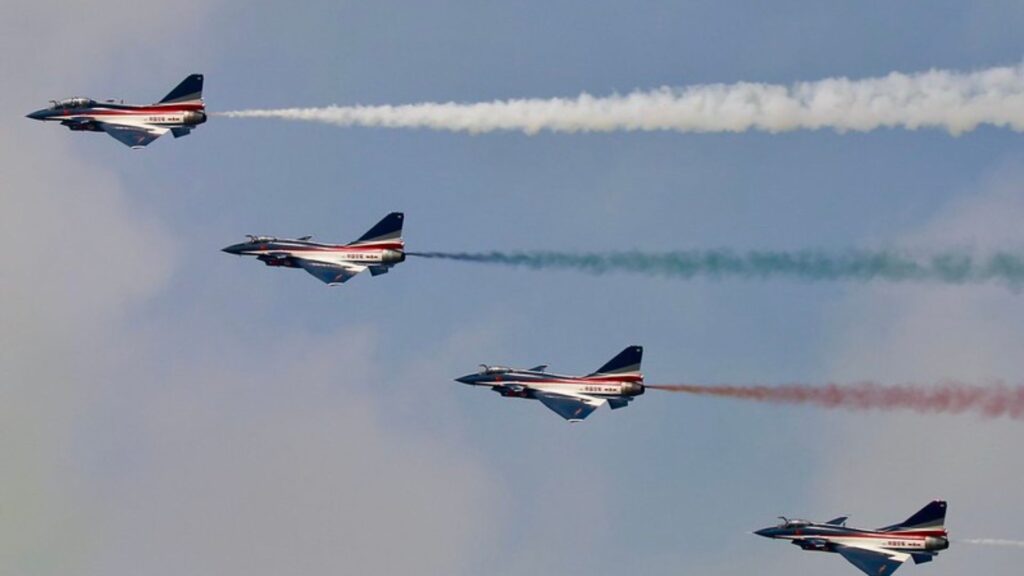
In addition to stealth fighters, China has also been upgrading its fleet of fourth-generation jets like the Shenyang J-11. The J-11 serves as China's frontline air superiority fighter, with precision strike abilities. New variants feature advanced avionics, sensors, and weapons that make the J-11 more than a match for earlier US fighters like the F-15 and F/A-18. With its large fleet of J-11s, China can maintain air dominance even without relying solely on its newer fifth-generation jets.
Additionally, China has made significant advancements in hypersonic missile technology, which further strengthens its offensive capabilities.
This rapid modernization of China's air force has implications for the balance of power in the region and beyond. As China's military capabilities continue to grow, it poses a challenge to the existing regional security architecture. Other nations must closely monitor these developments and consider appropriate responses to ensure their own security and interests.
Table: China's Fifth-Generation Fighter Jets
| Fighter Jet | Manufacturer | Key Features |
|---|---|---|
| Chengdu J-20 | Chengdu Aerospace Corporation | - Stealth capabilities |
| Shenyang FC-31 | Shenyang Aircraft Corporation | - Multirole capabilities - Advanced avionics systems |
| Shenyang J-11 | Shenyang Aircraft Corporation | - Air superiority fighter - Precision strike abilities - Advanced avionics and sensors |
The modernization of China's air force raises concerns about the potential for increased military tensions and regional instability. As China's military capabilities grow, neighboring countries may feel threatened and respond by increasing their own defense spending and military preparedness.
To address these challenges, it is essential for countries in the region to engage in diplomatic dialogues and cooperation, promoting transparency and trust-building measures. This includes efforts to establish risk reduction mechanisms and adherence to international norms governing military interactions. Responsible communication and engagement between China and other nations are crucial to maintaining regional stability and preventing unintended escalations.
China's Disregard for International Air Safety Norms
By frequently engaging in risky aerial maneuvers, China's pilots undermine international air safety rules and norms of behavior. Protocols meant to prevent midair disasters appear regularly flouted.
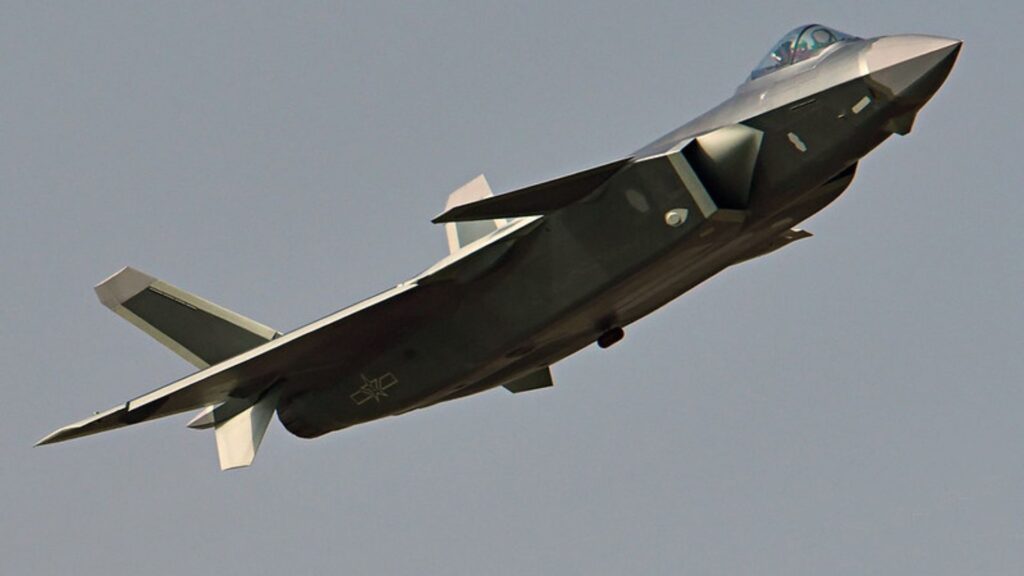
Dangerous Maneuvers Putting Pilots at Risk of Collision
Experts note Chinese intercepts involve dangerous tactics like:
- Flying extremely close alongside or in front of another plane.
- Cutting suddenly across the path of another aircraft.
- Lacking awareness of minimum safe separation distances.
- Approaching head-on or descending unannounced from above.
- Jamming communications so warnings can't be sent.
These methods of harassment increase the chances of an accidental collision, especially when visibility is low at night or in clouds. They show a cavalier attitude toward safety among Chinese pilots.
Routine Flouting of Accepted Protocols and Standards
Normally, intercepting aircraft are expected to maintain a safe distance. Radio contact should be established to avoid surprises. Navigation lights and transponders are kept on for visibility.
Yet Chinese pilots regularly:
- Get dangerously close, within just yards of other planes.
- Stay silent on radio frequencies despite contact requests.
- Fly with no lights on and transponders off.
- Make unpredictable and erratic maneuvers.
By disregarding internationally accepted standards, China undermines the mutual trust vital for air safety. Their aggression leaves little margin for error.
Implications for Regional Stability and Global Security
Beyond just creating unsafe conditions aloft, China's assertive air power posture has troubling implications for stability and security. The possibility of small incidents spiraling into open conflict has risen.
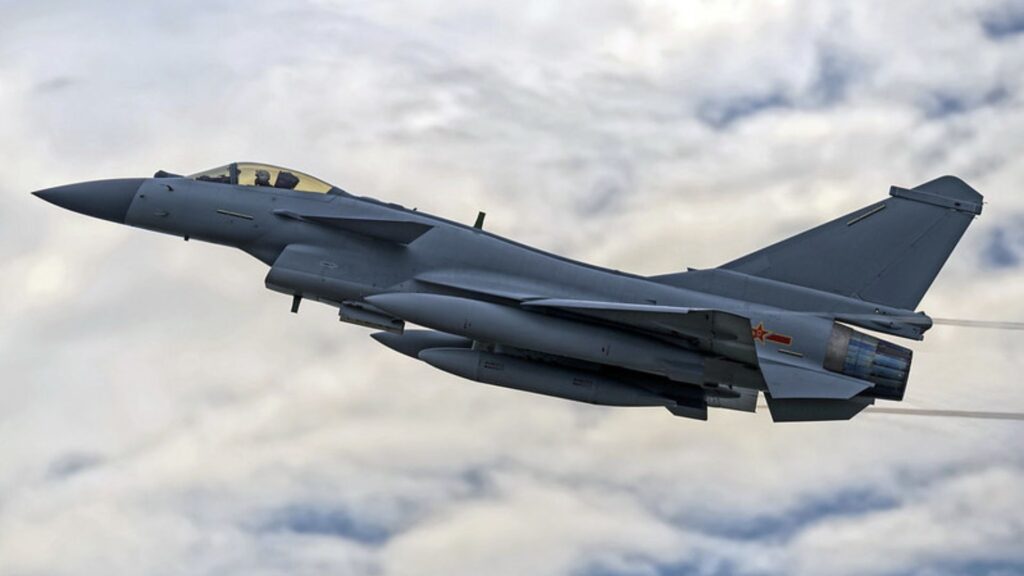
Potential for Miscalculation and Unintended Escalation
With Chinese fighters routinely buzzing US and allied planes, disaster is just one mistake away. If pilots misjudge speed or distances, a collision could result in the loss of aircraft or crew.
Either side might misinterpret such an accident as deliberate, especially with existing mistrust. This could lead to retaliation and an escalating tit-for-tat cycle. There are concerns in Washington that China may even provoke an incident intentionally.
Like the Crimean War beginning with a misread order, conflict between great powers could arise from carelessness or recklessness. As Chinese and American forces operate in close proximity, leaders must manage tensions prudently.
Undermining International Rules-Based Order
By disregarding accepted air safety procedures, China undermines the international order that has kept peace since WWII. Flouting principles like freedom of navigation sets a worrying precedent.
If global security rests on a foundation of trust, cooperation, and lawfulness, China's actions erode that crucial foundation. They signal a unilateralist attitude and unwillingness to compromise. This jeopardizes norms needed for stable US-China ties.
Responsible stakeholders uphold their obligations and respect established codes of conduct. China must recognize that its participation in the world community brings benefits as well as duties.
Managing Tensions Amid Strategic Rivalry with China
As Chinese fighter capabilities advance, prudence demands preparedness and deterrence by the US and allies. However, preventive diplomacy and de-escalation measures are equally vital for navigating great power competition.
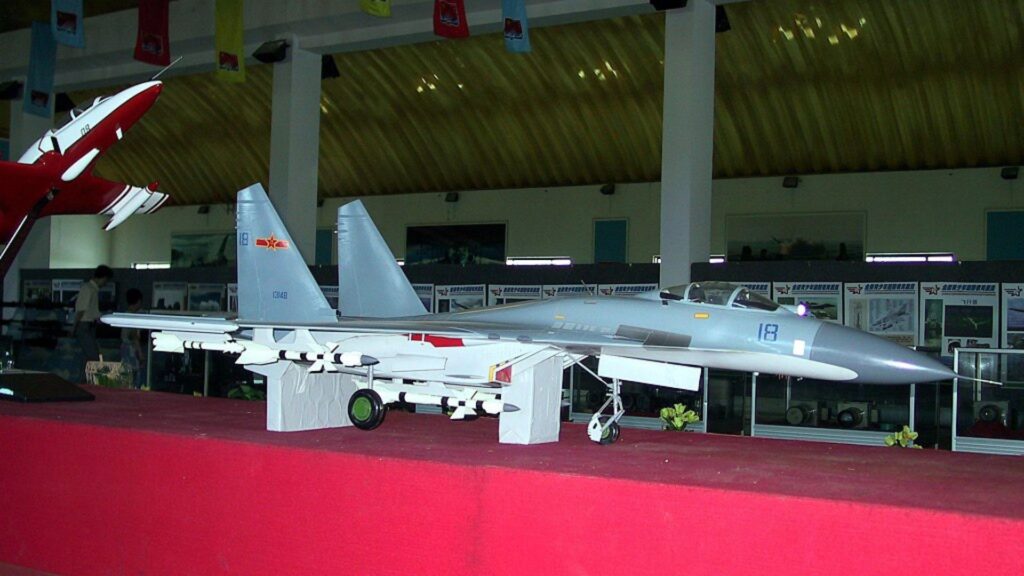
Importance of Communication and Diplomacy
To minimize misunderstandings and reduce risks, both sides need more direct communication at senior military and political levels. Hotlines connecting national leaders, as existed during the Cold War, could help clarify intentions and prevent miscalculation.
Diplomatic initiatives that build trust and transparency, such as rules for naval encounters, are worthwhile even if agreement proves difficult. The goal should be creating "off-ramps" that interrupt escalation chains before they spiral out of control.
Upholding Freedom of Navigation as Key Principle
The US and allies must continue operating ships and aircraft wherever international law permits. Maintaining presence is the best way to uphold freedom of navigation and overflight.
However, defending principles should not mean reflexively deploying forces in response to every Chinese provocation. That risks playing into China's hands, allowing it to dictate events and exhaust its opponents.
Avoiding Knee-Jerk Reactions While Deterring Aggression
Strategic patience is required to keep in check nationalistic sentiments on both sides that could inflame public passions. Leaders must not just calculate power balances but pay equal attention to how opponents will interpret moves.
Deterring future Chinese adventurism requires enhancing US and allied military strength in the Indo-Pacific. Yet America's armed forces offer only part of the solution. Equally vital is skillful diplomacy and statecraft to manage great power rivalry.
Thucydides' warning about fear, honor, and interest driving conflict remains apt. Though China's rise disrupts the status quo, its power could be channeled for global benefit if all nations sustain dialogue. Both strength and wisdom are needed to build a stable balance fostering continued peace.
Conclusion
The rapid development of highly capable fighter aircraft gives China dominant air power over its neighborhood. Within a decade, the PLAAF's stealth jet fleet could surpass America's total numbers. Yet skillfully managing strategic competition is more about wisdom than just weaponry. Following international rules, communicating intentions, and exploring diplomacy must occur alongside military preparedness. Clarity, patience, and understanding from both Washington and Beijing can keep great power rivalry from spinning out of control.
FAQ
Have there been any specific incidents involving Chinese fighter jets?
Yes, in December 2022, a Chinese Navy J-11 fighter jet came within 10 feet of a U.S. Air Force B-52 bomber flying over the South China Sea, forcing evasive maneuvers and demonstrating poor airmanship.
How do Chinese fighter jets impact Taiwan?
The presence of Chinese fighter jets near Taiwan, a region China considers part of its territory, increases tensions and raises the risk of accidental clashes that could escalate into a larger conflict.
What are some examples of unsafe and unprofessional intercept incidents involving Chinese fighter jets?
Examples include flying dangerously close to U.S. and allied aircraft, aggressive maneuvers, obstructing flight paths, and employing tactics such as releasing chaff, water cannons, and military-grade lasers to intimidate other nations' aircraft and vessels.
How has China modernized its air force?
China has rapidly developed and fielded advanced fighter aircraft, including indigenous designs of fifth-generation fighters, while also making significant advancements in missile technology, particularly hypersonic missiles.
What are the implications of Chinese fighter jets for global security?
The provocative actions and unsafe intercepts by Chinese jets heighten the risk of accidents, miscalculations, and military tensions, potentially sparking a larger conflict and undermining international norms.
How can the rise of China as a military power be balanced?
Maintaining a balance of power requires diplomatic engagement, military preparedness, and cooperation among like-minded nations to counterbalance China's growing military capabilities, particularly in the Indo-Pacific region.
Why is responsible military communication important?
Establishing communication channels between China and other nations can reduce the risk of accidents and miscalculations, helping to responsibly manage the defense relationship and maintain regional stability.
How close did the Chinese fighter jet come to the American B-52 bomber during the unsafe intercept?
A: According to the Pentagon, the Chinese J-11 fighter came within just 10 feet of the B-52 bomber over the South China Sea. This extremely close distance raised major concerns about the pilot being unaware of how close he came to causing a dangerous mid-air collision.
What has the reaction been to this unsafe intercept from China and the US?
A: The US Indo-Pacific Command said in a statement that the Chinese pilot acted in an unsafe and unprofessional manner, putting both aircraft in danger. China's Foreign Ministry spokesperson Mao Ning downplayed the incident and said the US has no right to interfere in China's disputes in the South China Sea.
Has there been a pattern of similar unsafe intercepts between Chinese and US military aircraft?
A: Yes, US officials report over 180 such unsafe and unprofessional incidents initiated by China since the fall of 2021. This indicates a concerning trend of Chinese pilots routinely acting aggressively and disregarding international air safety norms during intercepts with foreign aircraft.

